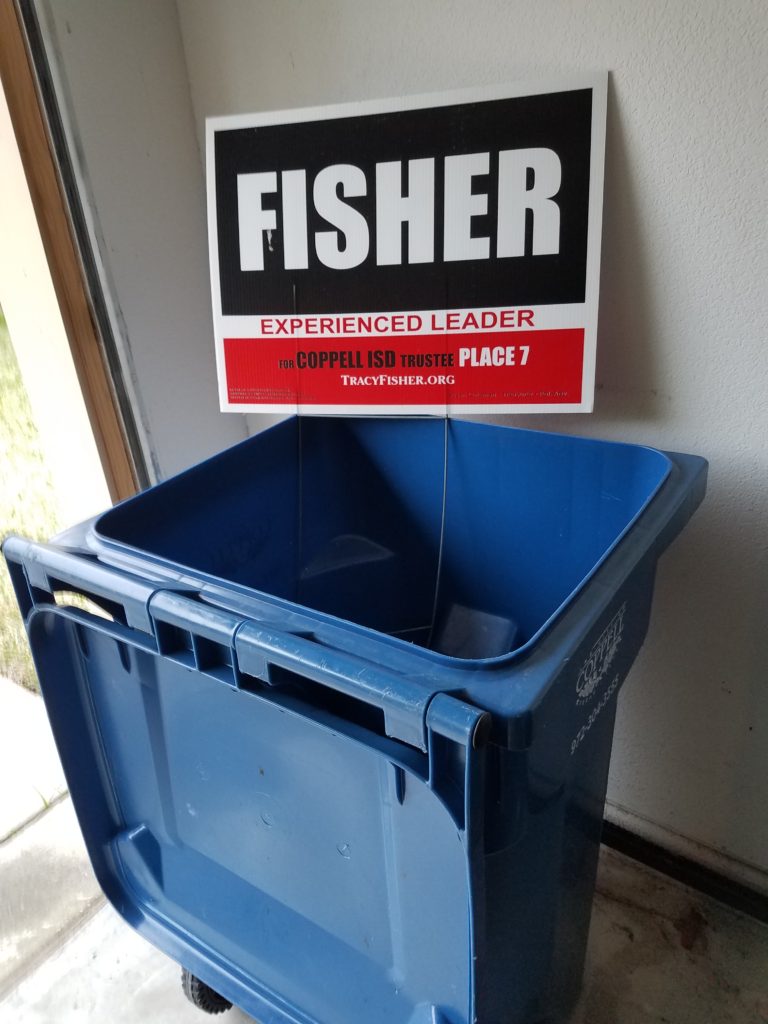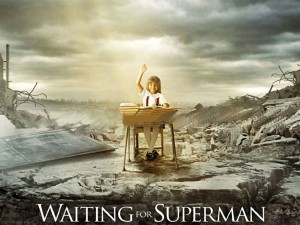
Recycle Tracy Fisher
President Harry S. Truman once said, “The Buck Stops Here”. The phrase refers to the notion that the President has to make the decisions and accept the ultimate responsibility for those decisions.
Based on this, for what I am about to tell you, the buck stops with Board of Trustees President Tracy Fisher.
In a nutshell, Coppell ISD interfered in my child custody matter. Coppell ISD did so by getting its attorneys to file a Petition in Intervention in my child custody case. According to an Administrative Law Judge based in Austin, he had never seen this type of action by a school district, interfering in a custody matter, in his 25 years on the bench. And that too regarding a trivial dispute over how many emails I should be allowed to send (then) Assistant Superintendent, Brad Hunt (see link at the bottom for details).
Thus far, Coppell ISD has spent more than $250,000 in legal fees in this matter (based on information obtained via Open Records and estimated to date). This figure will continue to grow as the legal matter is still ongoing and could reach the half a million dollar mark before the legal matter concludes. This is money that should be spent educating our children.
To put this amount in perspective, $250,000 could have paid the salaries of 5 Coppell ISD teachers for a year.
Why is “Coppell ISD” taking money that should be spent on our teachers and our children and handing it over to a law firm?
We all know “Coppell ISD” is not a real person. So, who made the decision to give Coppell ISD’s lawyers a blank check to spend unlimited amounts of money to interfere in this private matter? Who made the decision to divert sacred public education funds to a private law firm?
There are only 2 suspects – the Administration (headed by Brad Hunt) and the Board of Trustees (headed by Tracy Fisher).
I have known both Brad Hunt and Tracy Fisher for almost a decade and have had excellent relations with both of them. I even regard Tracy Fisher as a friend!
I have repeatedly tried to reason with them to stop this madness, reach a settlement (non-monetary, involving just resolving some communication issues between me and Coppell ISD personnel) and end the bleeding (of dollars) from Coppell ISD – and from Coppell families and taxpayers.
Amazingly, both of them, in addition to contending that they are not responsible for making these type of legal decisions, also act blithely unconcerned that massive amounts of public funds intended for our children are being wasted.
So, from the look of it, the lawyers are now in charge of Coppell ISD and essentially have a free rein to bill at their own discretion with little to no oversight from district management or the Board of Trustees.
Then what can be done to stop this continuing bleeding of taxpayer dollars which should be spent on education, not litigation?
For the solution, once again I go back to Harry S. Truman’s saying, “the buck stops with the President”. In this case, whether she will accept responsibility or not, the buck stops with Coppell ISD Board of Trustees President Tracy Fisher. And since she seemingly has no clue how to stop this hemorrhaging, she has to go and make room for someone else who can take charge of the situation and stop this obscene waste of our tax dollars, money that has been diverted from our children’s education.
That is why I am dumping my old friend Tracy Fisher and will not be voting for her in this coming election.
Post Script: If those of who have read this far and are curious as to what in world happened between me and the powers that be at Coppell ISD that led to this situation, this link should give you an idea: https://venkyvenkatraman.com/2017/04/my-secretary-brad/

